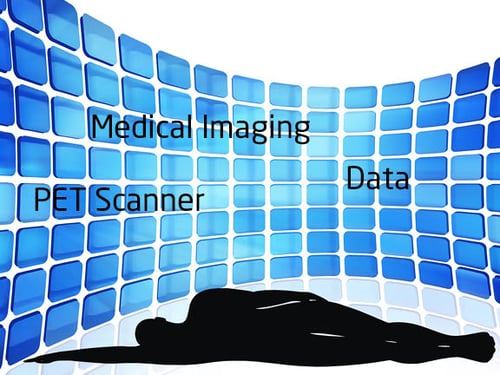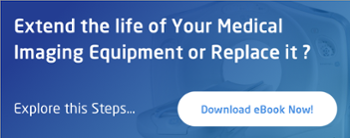Since the advent of modern medicine doctors, researchers, engineers and technicians have worked diligently to create better, less intrusive ways to diagnose and heal people. As technology continues to advance exponentially, our ability to refine and redesign the
equipment we use in hospitals and clinics around the world grows.
One of the most important areas of emphasis for this ongoing push to improve medicine focuses squarely on medical imaging in all its forms. The essence of medical imaging has always lain in the relationship between patterns of energy and how it reacts with healthy or diseased tissue. However recent advances are not only opening the door for medical imaging to provide much more precise data but also become an integral part of the healing process itself.
Total-Body PET Scanner
Researchers and scientists from the U.S. Department of Energy’s Lawrence Berkeley National Lab have set out to build the world’s first total-body Positron Emission Scanner, a device that could change the way cancers and other diseases are both diagnosed and treated.
By using a radioactive tracer, today’s PET scans show how organs and tissues within the body are functioning. They are used to diagnose and track a variety of diseases. By following the tracer doctors are able to gain a clearer picture of how a disease is affecting the body and determine a better course of treatment. For example, if a doctor follows a tracer that is known to accumulate in tumors, they are then able to diagnose, design and administer a treatment for that specific type cancer.
The project’s ultimate goal is a PET scanner capable of simultaneously examining the entire human body at once. This is a massive jump from today’s PET technology that only scans 20-cm segments at a time. This revolution in scanning technology would also reduce scan time to around 30 seconds, and cut the radiation a patient is exposed to by a factor of 40.
To create this type of PET scanner researchers will have to create a machine capable of processing the data from a million detectors at the same time. This is where our technological boom has made its biggest impact. Before the last decade computers were not powerful enough to quickly process that much data, but now they are.
Collecting Data for Diagnosis
Advancements in technology have provided an abundance of measurable parameters that have taken medical imaging beyond organ anatomy and pathology into the realms of physiology, pharmacology and cellular and molecular biology. The scale of measurement now capable has been extended from centimeters and millimeters to encompass micrometers and nanometers. When combined together these developments are moving radiology into the age of molecular medicine and genomics.
Today’s medical imaging equipment and scanners produce images that are far more than the grainy pictures of 50 years ago. They are sources of data that contain important information not qualitatively perceptible by human observation. Depending on the type of scan, from MRI to CT or PET, there are a countless number of unperceivable parameters that can be recorded by a computer as data. This data can be empirically linked to different conditions, origins or diseases. It can be tracked to the smallest detail and used to develop treatments that can target tissues within the human body or entire populations of at risk patients.
The Future Is Clear
New developments will certainly involve vastly increased complexity in imaging technology and radiology practice. Researchers will continue to push the boundaries of what is possible. As a result technicians and physicians will see the need for the increased educational activities those advancements require.
These new highly precise machines like the PET scanner mentioned above will create a wealth of data at both the micro and macro levels. This will undoubtedly provide us with increased clarity as to what is happening inside the human body as well as what is happening in larger populations.
The future will bring new capabilities that have even greater medical value. We will see radiation dose continue to drop and utilization of imaging services become more efficient, with fewer healthcare resources wasted, including the increasingly scarce commodity of time—to the benefit of patients, physicians and workers in the healthcare system.
For more information on medical imaging systems please contact Jeff Weiss at 212-366-9100 or Jeffweiss@atlantisworldwide.com
Some blogs you may have missed:
- Medical Imaging is Helping Redefine the Future of Surgery
- 3D Printing in Medical Imaging & Healthcare
- Physicians & Social Media: Yay or Nay?
- What’s really behind XR-29 follow-up paper?
- Time to talk PET/CT
Meet the author: Vikki Harmonay




